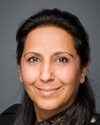To the first question, I think there's always more one can do. What you heard earlier from Status of Women Canada is true. I manage the general social survey, which has 25,000 respondents. So if we want to look at women in a particular geographic area, broken down by age and minority status, and so on, you will pretty soon have such low cell counts that the results are not releasable. So there's always more you can do. There is a wealth of data that probably isn't being adequately used, so there's a fine line there.
As to how we collect the data, we have administrative data that comes from the provinces, for example, health data on visits to doctors, and education data on enrolments. We also have survey data, usually developed in collaboration and consultation with all of the key stakeholders, including consultations with academics and expert researchers in the area. And we fall under a structure of an advisory committee, which provides expert advice on all of our surveys; and steering committees are usually directly involved too, which include representatives from the policy departments. The advisory committees are broader; they're usually made up of academic researchers, and NGOs sometimes, or a variety of people who have a stake in the result. That's how we go about developing the survey content.
I think it's important for the committee to know that part of what we do in that consultation or what we are counting on from our key stakeholders is for them, having done their gender-based analysis, to raise with us the issues that we need to know about in order to prepare a good questionnaire. I'll just give you a quick example. We just did a survey on older Canadians, 45 and older, and one of the topics we were asking about was retirement. When we consulted with our partners at HRSDC, they told us that retirement readiness is a different issue for women and men, because women have perhaps had work interruptions through their careers, having taken time off to do care, and so on. So if we don't have an adequate sense from the data whether this has happened to the particular women we're looking at, then we won't really be able to answer some of our key policy questions.
Given that, we then develop a questionnaire that will allow them to do that kind of analysis. So that consultation process is where there's a real opportunity to provide better data on gender.




